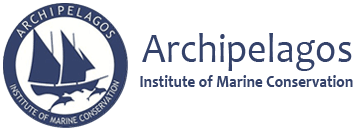I am a recent graduate student from the University of Birmingham, UK, with a BSc in Geography. The GIS and Remote Sensing internship at Archipelagos stood out to me as it combined independent field projects using a variety of remote sensing techniques with interesting data analysis on research that focus on the most vulnerable ecological communities in the Aegean.

Posidonia oceanica mapping project
The main goal when I arrived was to continue the work to accurately map the presence of Posidonia oceanica seagrass initially throughout Lipsi island and after further afar. This is an incredibly important project as this species of seagrass plays a crucial role in many ecosystem services including reducing coastal erosion, providing nursery grounds for marine wildlife, significant carbon sequestration and even sea water filtration.

The ecological and economic significance of this species has been under threat from eutrophication, climate change, coastal development and boat anchoring in shallow waters where this species thrives.


Data analyses and Python
Another aspect of this internship which enticed me was to expand on my programming skills through Python by applying it to the field data we collected. I have been working on a series of Python Notebooks that use supervised and unsupervised classification techniques alongside object-orientated image analysis, to delineate the Posidonia oceanica extent using the drone footage to allow accurate comparisons of the field measurements. I am also planning to work on automatizing as many processes as possible with Python to reduce data processing time and remove subjective bias through the manual analysis of field measurements.

Part of the GIS work is to contribute to the spatial analysis of other research teams of Archipelagos such as dolphin and seabird sightings, marine litter and seagrass health datasets. It is interesting to use my GIS and programming skills to be able to aid the development and analyses of these other projects.
I have really enjoyed the independent research and hands-on approach here at Archipelagos. I have been able to build on my skills in GIS and apply them in the field. I had the freedom to explore and contribute to other projects throughout the organisation such as seagrass replanting, monk seal surveys and invasive species monitoring. My original plan was to be here for three months, but I have enjoyed my time so much that I have decided to extend my stay so that I can continue my research and build on this unique experience before I hope to start my masters programme in September 2021.
Billy Browning
BSc Geography
University of Birmingham, UK


